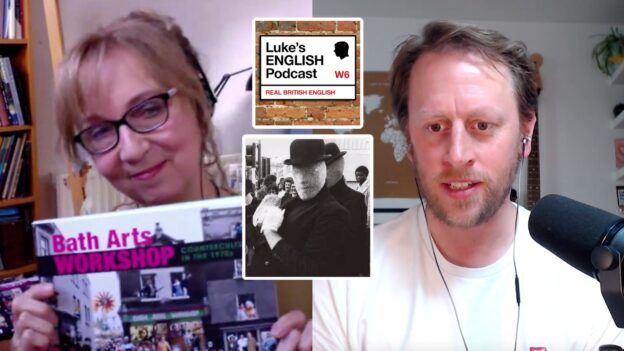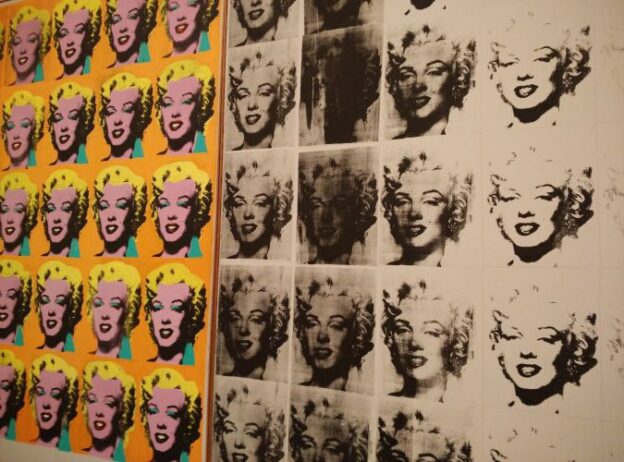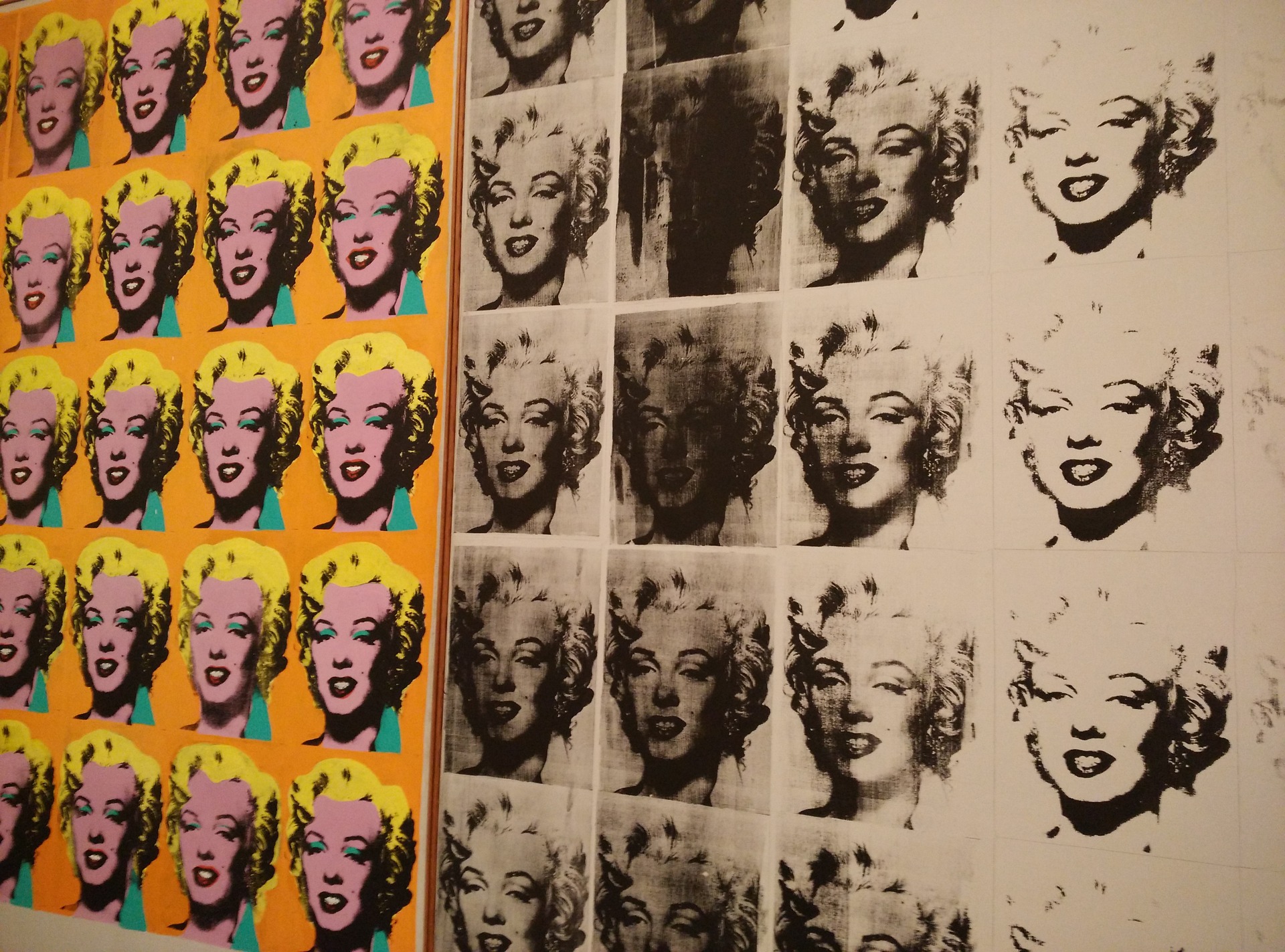Chatting to English author & illustrator Penny Dale about her involvement in a counterculture arts movement from the 1970s, the Bath Arts Workshop. Video version and vocabulary list available.
Audio Version (with 30mins extra ramble at the end)
Video Version
Transcripts and Vocabulary Notes
Intro 1 (audio – pre jingle)
Hello everyone and welcome back to Luke’s English Podcast – a podcast for people learning English. British English in this case. My name is Luke. Welcome.
Here is a brand new episode for you. I hope you enjoy it! There’s a video version too on YouTube.
Yes, hello listeners! You might be able to hear my computer’s fan. There’s hiss in the background because my computer is working hard to encode the video version of this. *Luke rambles for a few sentences*
“Luke you’re rambling again!”
This is an interview episode with a guest. I should say that this might be a difficult one, depending on your level of English of course! My guest and I are talking about a specific artistic and cultural movement that happened in England in the 1970s. I say specific, but it included many different types of art, theatre performance, music and community work – all packaged together in one movement, a movement which was quite revolutionary at the time, but revolutionary in the nicest possible way. That should become clear as you listen to this. Anyway – an alternative, subversive, counterculture arts movement.
The reasons I think this might be difficult for you to follow are: language (there’s a lot of vocabulary used to describe and discuss art & culture of various kinds) also the fact that there are references to things you might not know about already, including the names of artists, poets, musicians and specific locations in England (obviously, if you don’t know those reference points then things might get confusing), and simply the fact that this is quite a difficult arts movement to understand for anyone – native and non native speakers alike. Also, my guest and I aren’t really grading our English or slowing down a lot, and I’m aware of that. I am presenting this to you as a piece of authentic listening practise, which, can be really good for your English if you’re willing to tolerate the bits you don’t fully understand.
So it might be tricky to follow, but I do hope you persevere. I think that as you continue to listen, the concepts and events we are discussing will become clearer to you and really exploring things that you might not be familiar with can be a great way to pick up new language
So, this should be a chance to learn about culture and by extension the words we use to describe that culture.
The video version has some annotations on the screen (with vocabulary and pictures), and the notes on the website will also include a vocabulary list, which will help you if you check it.
Right, let’s get straight into it then. There will be another little introduction from me, but that’s what I do isn’t it? I’m only trying to help.
Leave your thoughts and responses in the comment section. I will chat to you again near the end of this conversation, but now it’s time for the jingle, and here it is.
JINGLE
Intro 2 😂 (after the jingle)
Hello listeners, hello video viewers,
As you know, in episodes of my podcast I often talk about language learning, and I often I teach you specific things such as vocabulary, grammar or pronunciation (especially in Premium episodes), but also on this podcast I do episodes which are not specifically about the English language or about learning or teaching English. I also like to present you with things that I hope are simply interesting to listen to, or episodes which focus on culture rather than language, and this episode is one of those. This is a conversation which focuses on British culture and art and it is an interview about an artistic movement which took place in England in the 1970s. So, it’s not about English, but it is all in English of course and I’m presenting it to you as part of your regular English listening practice.
This is an interview with artist, illustrator and author Penny Dale, who was one of the members of the Bath Arts Workshop.
Let me give you some context to explain how this interview was set up. This will not take 15 minutes, I promise.
First of all, there is a new book available – it’s just been published. It’s called “Bath Arts Workshop – Counterculture in the 1970s” and as the title suggests it is all about a counterculture arts movement which took place in the South West of England in the 1970s. We’ll explain what a counterculture arts movement means in a few minutes.
One of the people involved in that artistic movement, and also involved in the publishing of this book is Penny Dale. Penny is an illustrator and also an author of children’s books – an award-winning author, I might add. She’s illustrated and written some very popular kids’ books in the UK and we have a lot of them at home – my daughter loves them, but back in the 1970s she hadn’t begun that part of her career yet and was involved in this conceptual and subversive arts movement – The Bath Arts Workshop.
Penny is a friend of the family. She is a very good friend of my mum and dad, and in fact it was my mum who suggested that Penny could be a good person for me to interview and that both the Bath Arts Workshop and her career as a childrens’ author would be interesting things to ask her about.
So that’s the plan. This will be two separate episodes I think – one about the arts movement, and another one about the writing of childrens’ books. Part 1 and part 2. This is part 1 of course, so let’s focus on the Bath Arts Workshop.
And by the way – Bath is a town in the South West of England – we’re not talking about bath tubs where you go to wash yourself and play with yellow rubber ducks and little boats. No, this isn’t an art movement that involved people sitting in bathtubs – but then again it was the 1970s so that isn’t completely far-fetched.
Ok that’s probably enough of an introduction from me. Let’s now meet Penny and start the interview properly.
Vocabulary list for the Interview
[A premium episode about this language is in the pipeline]
- Counterculture
- A workshop
- Inclusion / inclusivity
- Countering the elitism of modern art
- A hub for alternative technology, alternative art, alternative artists
- Students had grants that they didn’t have to pay back
- There was time and breathing space
- Being critical of the current state of affairs
- It was open to everyone, accessible. That was the ethos.
- Inclusivity was the thing.
- The workshop had sprung out of the London Arts Lab.
- He’d written letters to councils from all over the uk.
- Bath is a medium- size, fairly touristy city but full of incredible Georgian architecture.
- People coalesced really quickly
- Some finance was eventually achieved through grants from the local council
- The first event had been rained off
- We encountered these events before we knew what the workshop were (yes, “were” for a workshop – a collective noun, like team, government, group, police)
- A pastiche group
- I went along to a gig, just to help with costumes and props ostensibly and it was an eye-popping experience.
- It was a really tight outfit (a band, not clothes)
- Really glittery clothes
- You brushed shoulders with the likes of Roxy Music
- Conventional / unconventional
- We made domes out of scaffolding. Geodesic domes. https://en.wikipedia.org/wiki/Geodesic_dome
- Windmills, solar panels.
- Allen Ginsburg came and he was a real trooper.
- A pivotal figure in what came to be known as the counterculture.
- I’m flagging up these names that are well known, but there were also… the breadth of the programme in these festivals was huge.
- A wide variety of different things
- It seems like quite a large and complex organism. It can seem like a chaotic kind of thing. It’s all a bit vague and nebulous.
- It was potentially quite chaotic, but it wasn’t. It was quite a strong, central hub for arts and community.
- One thing was – premises. We had a really good premises for a while, that was a rehearsal space were you could cook and have an office and everything.
- premises = the building and land used by a business or organisation
– It is always wrtten with an S
– ⚠️ People say “a premises“,
– “the premises is” or “the premises are“
– All☝️are considered correct - I found the music part the bit I was most intrigued by, myself.
- It was very all-consuming and busy, but fun.
- Maybe we can talk about impact. What about the impact of the BAW?
- Legacy is the word now, isn’t it?
Ending (with a bonus ramble in the audio version)
[This is a transcript of some of the things I said, but there’s a lot of extra, spontaneous talking in the audio version.]
So that was Penny Dale talking about the Bath Arts Workshop. Thanks again to Penny for that. I found it very interesting and it makes me think about my parents’ generation and the approach many of them had to things. That whole baby boom generation and the counterculture movement in general which I suppose includes things like the beat poets, hippies and all that stuff. I especially think of the music and the general ethos, which was that they could change the world with love. Were they idealistic and naive? Or not? I don’t see what’s wrong with a bit of peace, love and understanding myself. Love is all you need, right? Yes, but a bit of cash, a nice car, a decent apartment and maybe a new computer, and to have someone fix our washing machine, oh and a pair of shoes that fit me just right and don’t squeeze the sides of my toes – all those things would definitely help. I don’t know really, but I do think that the Bath Arts Workshop sounds like quite a beautiful venture, if you ask me, and it sounds like they had some great fun while doing it, and so on and so forth. I could go on.
You can leave your comments in the comment section as usual, if you have them.
Hello there! You’re still listening to the podcast. Nice one! Did you manage to follow this conversation?
Remember I said at the beginning that I’d put a vocabulary list on the website page for this episode. Well, I’ve done that, with some words or phrases that I think might have been hard, or which are worth picking up from the conversation.
I’m planning to do a premium episode in which I fly though them, just clarifying them a bit.
Sometimes I think I might go into too much detail in those premium episodes, and it’s ok to just say a few things about each bit of target language each time. So I will aim to do a kind of express premium episode as a way to recap and highlight some nice language from this conversation.
Let’s have a mini ramble here – and this is one of those times when I’m doing a written ramble – writing things down which I will record when the time is right. I like to mix up spontaneous speech and pre-written speech on this podcast. There are good and bad points of both. Mainly – the advantage of spontaneous speech is that it’s more natural and authentic and therefore a bit more human and engaging, but the advantage of pre-written stuff is that I can get some more control over what I’m saying. Anyway, I am still rambling here – pre-written or not.
My computer has stopped making that loud noise – it failed to encode the video, because there wasn’t enough storage space left on the hard drive. I’m sure you know the problem. Hard drive storage just gets eaten up so easily. Not only do I have to keep my flat tidy and organised, I also have to keep my computer tidy and organised and free of clutter, and my phone too for that matter! This is the world we live in. I will try encoding the video again later, after throwing a load of unwanted files into the trash – or rubbish bin as it should be called, if computers were British.
What’s going on in podcastland? Well, I’m recording this late on a Friday evening – maybe because I’ve got nothing better to do! Well, I could be watching TV or reading a book, playing the guitar or something else, but my wife and daughter are both asleep downstairs and so I thought I’d take this opportunity to catch up on a bit of podcasting.
I’m recording this probably before recording episode 750. This is episode 751 I think, which I will upload after 750, because that’s how numbers work, but I haven’t recorded 750 yet.
Does that make sense? I have a vague plan for episode 750 – probably something about being busy.
I like to record and publish in the same order, so there’s at least some sense of continuity. I know some podcasters will record something and then leave it for ages and kind of publish things in a different order to how they recorded, but I prefer to just publish and record as soon as possible.
I don’t know what I will say in episode 750, which means I don’t know what you have already heard me say, because even though right now I haven’t recorded that episode yet, there’s a good chance you are listening to this later and in your world you might have listened to episode 750 – I wonder what I said in that episode, or should that be, I wonder what I will say, or even, I wonder what I will have said? I’m in that weird limbo land where all those different verb tenses are possible. (Some people are confused now – even more confused than they were earlier).
Anyway, I think I will call it a day here. In a moment. I said before that things are a bit intense in my life at the moment – I am certainly not complaining, not at all, but I have a lot on my plate which means I’ve got less time for recording, editing etc. This means that I have lots of ideas building up in my head – podcast ideas – they sort of come to me at various moments, like when I’m teaching or when I’m walking to work, but then I can’t really turn those ideas into podcasts because of time constraints, but I’m trying to note them down for later.
I expect I’m repeating myself here, because I have a vague idea that I’ll talk about being busy and having things on your plate in episode 750. So, no need to continue at the risk of repeating myself, which is obviously a shocking crime that must be met with the harshest of punishments.
OK, the next episode will also be with Penny and it’s all about how she creates books for children, and this is actually a bit of a scoop because Penny is a really successful author of children’s books. They have won awards. They are in all the bookshops. One of her books was read out on BBCTV by Rob Delaney – a popular comedian. And her work is really great. Her illustrations in particular are absolutely lovely – very cute and adorable. So in episode 752 we can hear her talk about her process of creating these books, and it’s a nice cosy topic and I think it should be of interest to most LEPsters. So that’s something to look forward to.
So, I think this is a good moment to stop. Thank you so much for listening!



